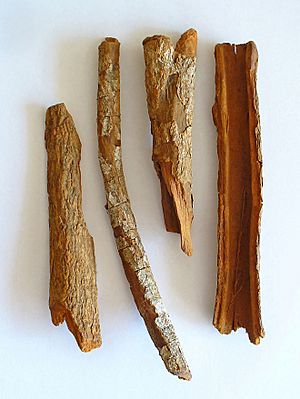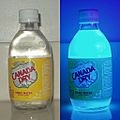Quinine facts for kids
Quinine is an alkaloid which can reduce fever, work against malaria, pain and swelling. The bark of the Cinchona family of trees contains quinine. Quinine can be made artificially, but this is more expensive than extracting it from the bark of the tree.
Quinine was the first treatment for malaria, known from 1631 in Europe, and probably much earlier to the native peoples of South America. Even today, quinine is used to treat certain forms of malaria, when other drugs fail or are unavailable. In that way, quinine is currently one of the best treatments for malaria tropica, which is caused by plasmodium falciparum. For the other forms of malaria, quinine is no longer used, as other drugs have replaced it.
History
Quinine relaxes muscles, and was used by the Inca of Peru to stop people from shivering. Europeans first reported using quinine against malaria in Rome in 1631.
The best type of quinine used to treat malaria was found by Charles Marie de La Condamine in 1737. Quinine helped Europeans colonize Africa. A historian said that "it was quinine ... that gave colonists fresh opportunities to swarm into the Gold Coast, Nigeria and other parts of west Africa".
Side effects
Quinine can cause cinchonism and even death (usually by pulmonary oedema) in some cases. Quinine can make someone paralyzed if it is injected into a nerve. It is very toxic in overdose.
Current uses
Quinine has a bitter taste. It was first added to drinks like Bitter Lemon and Tonic Water Quinine was added to have some protection against Malaria. In China, it is sometimes added to drugs against the Common cold.
Other pages
Images for kids
-
Tonic water, in normal light and ultraviolet "black light". The quinine content of tonic water causes it to fluoresce under black light.
See also
 In Spanish: Quinina para niños
In Spanish: Quinina para niños





